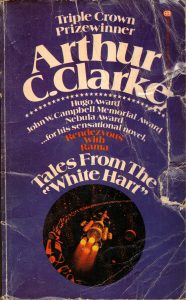NOTE: Due to recently (24 June 2019) discovered repetition of a previously used vocabulary word, the offending entry has been replaced with a new word, definition, and example sentence. The original entry is preserved with strikethrough formatting.
1. marmoreal — resembling marble or a marble statue
His newly clean-shaven face accentuated his marmoreal visage as he gazed into the crepuscular distance.
2. runnel — small stream of water; small channel
The gutters mirrored the desuetude of the former summer home, and the leaky aluminum had allowed corroding runnels of rainwater to form all around the foundation of the house.
3. destine — set apart for particular purpose [usually in passive]
He was destined for greatness, or at least a legacy admission into Yale.
4. corrigible — capable of being corrected
We never thought of Bruce as being particularly corrigible, in spite of his frequent (and well-known) visits to a underground BDSM club.
5. electuary — medicament with the active ingredient mixed with honey, syrup, or jam
This mountebank claimed an infallible cure for the Grand Pox with his electuary, crafted, so he said, from beetle wings and sowbugs mixed with syrup.
diffident — lacking self-confidence; timid
Once upon a time a diffident attitude in a young person might have been merely annoying, if not perhaps appropriate for a newly minted adult; nowadays it is never seen, as even the agoraphobics maintain breathless Instagram activity.
6. wicket — small door or opening, often placed in or beside a larger door, for use when the larger entrance is closed
I stumbled while stepping through the wicket in the barn door, catching my boot on its wooden lip.
7. strigil — implement with curved blade used for scraping sweat and oil off the body after hot bath
I puzzled over the strange-looking shoehorn displayed beside the fireplace for quite a while before realizing that it was actually a bronze strigil, or more likely a replica of a Greek or Roman original, as the metal seemed entirely unaffected by age (which was more than I could say for myself).
8. lollop — to move with bounds and leaps
Towards the enormous ballpit lolloped the children, sugar-crazed six-year-olds bent upon extreme fun.
9. cocotte — prostitute
The bold stare of the cocotte held him frozen, and he forgot his purpose in entering the small chamber while she sat unashamed in her warm bath.
10. mizzle — fine, drizzling rain
An amber aurora seemed to surround the lonely lamppost which feebly illuminated the mizzle that struggled even to form droplets on the automobiles parked below.





















